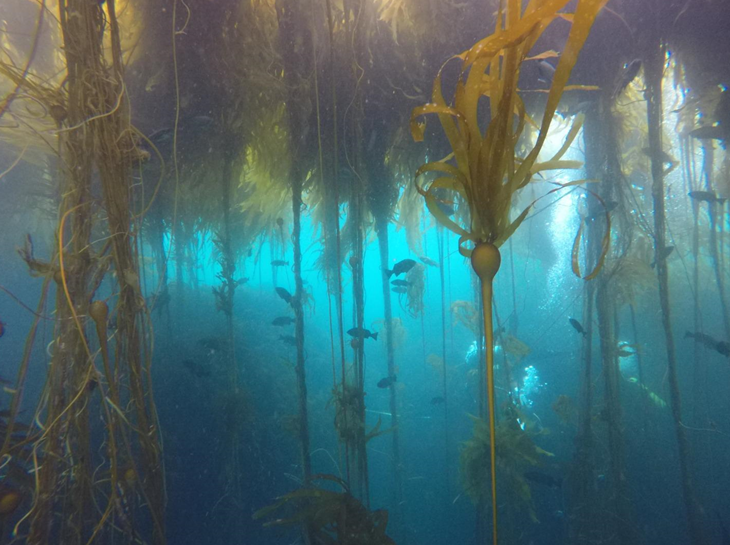Kelp forests can support local communities in a variety of ways, including wave attenuation, food production, and erosion reduction. Yet, these submerged plants are not widely regarded as providing coastal resilience benefits compared to other nearshore ecosystems like coral reefs, mangroves, and salt marshes. This project aims to identify the role of canopy-forming kelp in coastal resilience on the U.S. West Coast. We are synthesizing information from existing literature on the two primary canopy forming ecosystem engineers for kelp forests in the U.S. Pacific: Giant kelp (Macrocystis pyrifera) and Bull kelp (Nereocystis luetkeana). The literature synthesis will be supplemented by discussions with Alaska-based resource managers and stakeholders. Project findings will serve as a “roadmap” for incorporating kelp in future coastal resilience research frameworks to generate benefits for coastal communities and infrastructure.
Why We Care
When coastal resource managers and scientists think of ecosystems that provide coastal resilience benefits, salt marshes, oyster reefs, and coral reefs typically come to mind. This is because these ecosystems are well-documented to protect coastal communities and associated infrastructure by attenuating wave energy and reducing coastal flooding. Kelp forests can likewise attenuate wave energy and — albeit to a lesser extent — reduce coastal erosion, yet these submerged plants are not widely regarded as providing notable coastal resilience benefits. Given that kelp forests face global declines from compounding threats like marine heatwaves, increased storm strength and frequency, pollution, and habitat degradation, synthesizing the extent to which kelp forests can potentially contribute to and be used to bolster coastal resilience (e.g., provide nature-based solutions) is warranted.

What We Did
We are identifying how kelp forests relate to and can be harnessed to improve coastal resilience through a synthesis of existing primary literature. The literature synthesis will be supplemented by discussions with Alaska-based stakeholders, including resource managers, restoration practitioners, tribal organizations, and industry members. Focusing on stakeholders in Alaska fills a critical gap as other areas on the U.S. West Coast have comparatively more research and have begun restoration efforts. Using information from the literature synthesis and stakeholder discussions, we will detail existing knowledge, as well as knowledge gaps, on how kelp forests created by canopy-forming kelp can confer coastal resilience benefits. Coastal resilience outcomes of interest include wave attenuation, shoreline stabilization, flooding reduction, coastal infrastructure protection, and socioeconomic returns. The project team includes scientists from NCCOS and the Office of National Marine Sanctuaries.
Benefits of Our Work
This project will help fill gaps in understanding how kelp links to coastal resilience. Findings will serve as a “roadmap” for NOAA and partners to determine how to best incorporate kelp in future coastal resilience research directions. The synthesis findings will also be provided to partner and user groups on the U.S. West Coast to help guide resource management decisions related to the use of kelp as a nature-based solution.
Next Steps
- Conduct synthesis of existing literature on canopy-forming kelp and coastal resilience.
- Interview resource managers and other stakeholders to understand their perspectives and needs related to canopy-forming kelp and coastal resilience.
- Develop a database of information on canopy kelp and its role in coastal resilience.
- Synthesize findings on how canopy-forming kelp contributes to coastal resilience into a written report.
